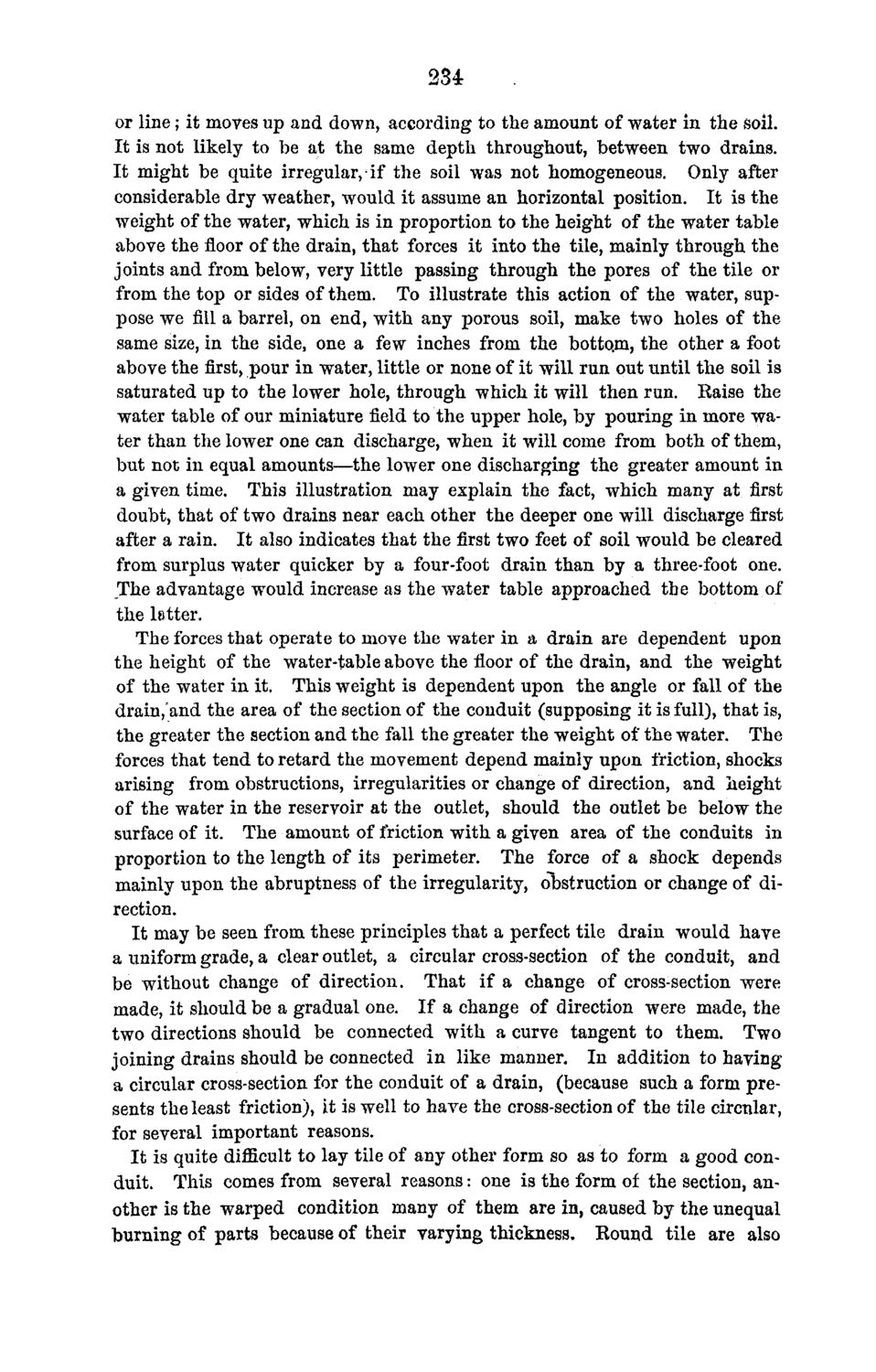| |
| |
Caption: Board of Trustees Minutes - 1870
This is a reduced-resolution page image for fast online browsing.

EXTRACTED TEXT FROM PAGE:
234 or line; it moves up and down, according to the amount of water in the soil. It is not likely to be at the same depth throughout, between two drains. It might be quite irregular, if the soil was not homogeneous. Only after considerable dry weather, would it assume an horizontal position. It is the weight of the water, which is in proportion to the height of the water table above the floor of the drain, that forces it into the tile, mainly through the joints and from below, very little passing through the pores of the tile or from the top or sides of them. To illustrate this action of the water, suppose we fill a barrel, on end, with any porous soil, make two holes of the same size, in the side, one a few inches from the botto.m, the other a foot above the first, pour in water, little or none of it will run out until the soil is saturated up to the lower hole, through which it will then run. Eaise the water table of our miniature field to the upper hole, by pouring in more water than the lower one can discharge, when it will come from both of them, but not in equal amounts—the lower one discharging the greater amount in a given time. This illustration may explain the fact, which many at first doubt, that of two drains near each other the deeper one will discharge first after a rain. It also indicates that the first two feet of soil would be cleared from surplus water quicker by a four-foot drain than by a three-foot one. The advantage would increase as the water table approached the bottom of the latter. The forces that operate to move the water in a drain are dependent upon the height of the water-table above the floor of the drain, and the weight of the water in it. This weight is dependent upon the angle or fall of the drain,"and the area of the section of the conduit (supposing it is full), that is, the greater the section and the fall the greater the weight of the water. The forces that tend to retard the movement depend mainly upon friction, shocks arising from obstructions, irregularities or change of direction, and height of the water in the reservoir at the outlet, should the outlet be below the surface of it. The amount of friction with a given area of the conduits in proportion to the length of its perimeter. The force of a shock depends mainly upon the abruptness of the irregularity, obstruction or change of direction. It may be seen from these principles that a perfect tile drain would have a uniform grade, a clear outlet, a circular cross-section of the conduit, and be without change of direction. That if a change of cross-section were made, it should be a gradual one. If a change of direction were made, the two directions should be connected with a curve tangent to them. Two joining drains should be connected in like manner. In addition to having a circular cross-section for the conduit of a drain, (because such a form presents the least friction), it is well to have the cross-section of the tile circular, for several important reasons. It is quite difficult to lay tile of any other form so as to form a good conduit. This comes from several reasons: one is the form of the section, another is the warped condition many of them are in, caused by the unequal burning of parts because of their varying thickness. Bound tile are also
| |